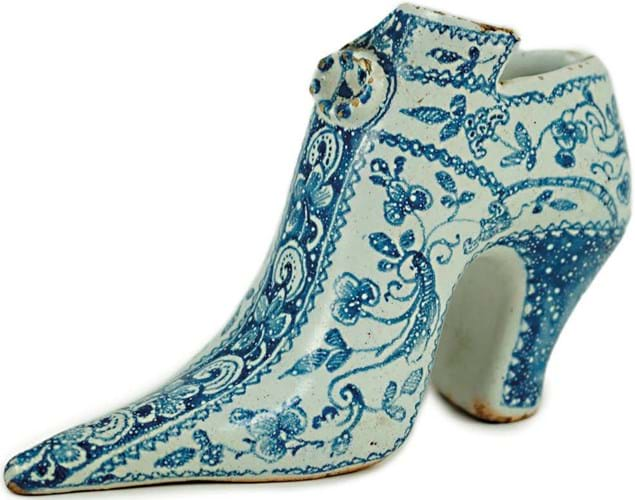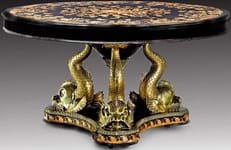Decorated in blue, green and iron red and initialled IP 1723, the jar was made to contain ‘Theriaca Andromachi’, a preparation made according to the formula of Andromachus, a Roman physician of the first century.
Several other jars of the same shape and decoration are recorded and it is thought that at least two sets of this type were made, probably in London. It has been suggested that the initials IP may refer to James Piston, who became Upper Warden of the Society of Apothecaries in 1722 and Master in 1723.
A nearly identical jar (with restorations to cracks and breaks) formed part of Syd Levethan’s Longridge collection and was sold by Christie’s in May 2011 for £10,625.
This present example, again broken and reglued in multiple places, came for sale on June 17-18 with a guide of £2000-4000. It raced away to bring £16,000.
Time and place
Inscribed and dated pieces of English delft command a significant premium over pieces that have less of a sense of time and place.
The summer sale at Gorringe’s (23% buyer’s premium) in Lewes on June 28 included a documentary English delftware blue and white shoe of similar date.
This 6in (16cm) long model, painted with bands of flowers and scrolls, was also damaged (there was a large chip to the tongue) but the underside of the arch was inscribed with the initials AM and May ye 12 * 1732.
A range of such shoes from London or Bristol bearing dates from the first quarter of the 18th century is illustrated by Louis Lipski and Michael Archer, Dated English Delftware (1984). This one sold for £2800 (estimate £300-500).
It seems these English pottery models copied real shoes of the time.
The earliest recorded English delftware shoes from the 1650s have lower heels, rounded tongues and bows.
Following changing fashions the heels and bows become larger (one of these dated 1674 sold for £11,000 at Bonhams in May 2017) and by the 18th century, they acquired a higher heel, a square tongue and more modest buckle.
















